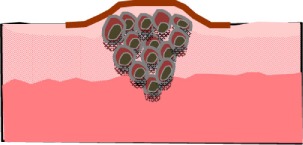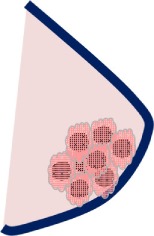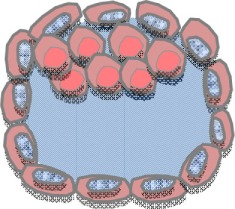Table 1.
Source of HLA-G-bearing EVs with potential immunological and clinical relevance.
| Cell type | EVs source | Potential target cell response | Function/mechanism | Clinical relevance | Reference |
|---|---|---|---|---|---|
 |
Melanoma | Tolerance-inducing effect of melanoma derived HLA-G-bearing EVs on immune cells | Potential induction of inhibitory signaling by HLA-G1-bearing EVs via LILRB1/2 receptors | Unknown clinical relevance | (32) |
 |
Kidney cancer | Inhibitory effect of HLA-G-bearing EVs on monocyte differentiation into mature DCs and reduced T cell proliferation | Inhibitory effect of HLA-G1-bearing EVs on monocyte differentiation and their maturation to DCs | Suppression of immune effector cells by HLA-G1-bearing EVs, leading to disease progression | (83) |
 |
Breast cancer | Modulation of immune effector functions by circulating HLA-G-bearing EVs | Unknown function | Association of high circulating amounts of HLA-G-bearing EVs to disease progression | (84) |
 |
Trophoblast | Modulation of immune effector functions by cytotrophoblast-derived HLA-G5-bearing EVs | Unknown function | Unknown clinical relevance, but potential biomarker for pregnancy-related disorders | (87) |
 |
Mesenchymal stem/stromal cells (MSCs) | Induction of tolerance between graft and host immune cells by MSCs-derived EVs | Immunomodulation by synergistic additive effect of HLA-G, IL-10, and TGFβ | Potential therapeutic option for patients with therapy–refractory GvHD using MSC-derived HLA-G-bearing EVs | (91) |
